(Ocean Robbins) The comedian Steven Wright once said, “I have a large sea shell collection which I keep scattered on beaches all over the world. Maybe you’ve seen it.”
Related Top 6 Organic Fertilizers for Your Garden
by Ocean Robbins, October 20th, 2021
If the beaches are a sea shell museum, then the sea plants that wash up on shores must constitute the vegan option in the museum’s cafe. Popularly known as seaweed, and recently rebranded as sea vegetables (which are technically the portion of all the seaweeds that are edible to humans, though we’ll use the terms a bit interchangeably in this article), these marine plants are poised to become, in the eyes of culinary trendspotters, the “new kale.”
And why not? They’ve got all the buzzwords going for them: organic, regenerative, non-GMO. And they’re versatile: from sushi to roasted seaweed snacks to smoothie ingredients, more and more people throughout the world are eating a wide variety of sea veggies.
While sea vegetables have long been a staple in Asian cultures, until recently, they’ve been largely absent from western cuisine. Only with the rise in popularity of sushi have they made their way into prominence on the world stage. And still, there’s a big gap between daintily nibbling on rice and veggies wrapped in nori, and viewing mounds of seaweed washed up on a beach and thinking, “Oh, yum!”
But that’s changing, and rapidly. Seaweeds — or as they’re often called, sea vegetables — now have some marketing muscle behind them. And there’s a lot to market; many varieties offer intriguing health benefits and may even be associated with increased longevity. Case in point, the centenarians living in the Blue Zone region of Okinawa, Japan, regularly incorporate sea vegetables into their diet.
But despite their benefits to both our health and the environment, there are some potential downsides to consider on both fronts.
So what’s the deal with sea vegetables? Are they good for you or the environment? Where do you find them? And, what are the best ways to use them in your diet?
What Are Sea Vegetables?
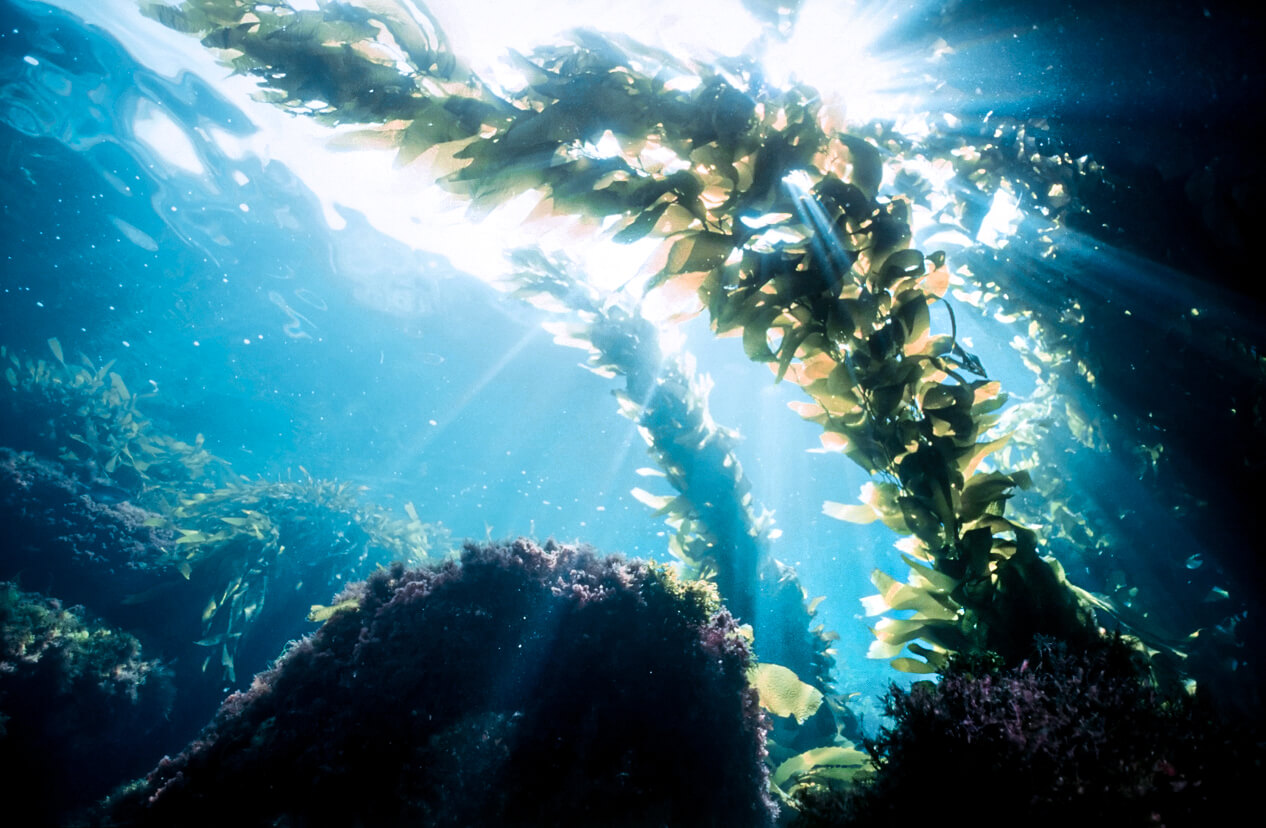
In most cases, sea vegetables are actually edible marine algae, or macroalgae. This is different from freshwater algae, like chlorella or spirulina (which also have great health benefits!). The macroalgae are plant-like organisms that generally live attached to rock or other hard surfaces in coastal areas. They have no true roots or leaves, and are more similar to mushrooms or lichen than terrestrial plants. But just like terrestrial plants, sea vegetables use photosynthesis to convert sunlight into energy.
Since the mid-19th century, cooks have categorized sea vegetables by color: green, brown, or red.
There are several popular types of sea vegetables:
Nori
Most commonly known for its use in rolling sushi, nori is a dried, pressed red seaweed. It has a naturally salty, umami flavor and is low in calories and high in minerals like vitamins B12, A, and C, along with iodine, magnesium, calcium, iron, and potassium.
Dulse
You can find dulse — a red sea veggie — in dried flake form, which you can shake onto other prepared dishes like pasta, stir-fries, and casseroles.
Arame
More of a garnish than an actual dish, arame is a brown seaweed served in long, thin strands, often as part of a Japanese-inspired salad. With a slightly sweet flavor, it is high in fiber, calcium, iodine, iron, magnesium, and vitamin A. When sold, arame can be found shredded, cooked, and air-dried and can be reconstituted with water. You can steam it, sauté it, or add it to hot soup.
Kombu
Unlike other types of seaweed, kombu can be used to make an umami soup stock called dashi, which is the foundational flavor of Japanese cuisine. You can also use kombu in dishes to impart a crunchy, firm texture or as a soft and pliable addition. Kombu is rich in calcium and contains more iodine than other seaweeds. This brown sea vegetable is also beloved for its ability to increase the digestibility of beans (making the “musical fruit” less musical). Thanks to its versatility and ubiquity in Japanese cooking, kombu has earned the nickname “king of seaweeds.”
Wakame
Frequently used in Asian dishes like salads, soups, and snacks, wakame also gets used as a seasoning. It’s sometimes known as “sea mustard,” referring to its visual resemblance to mustard greens when cooked. Not surprisingly, it’s a very good source of calcium, iron, riboflavin, folate, and magnesium.
Wakame has a mild flavor and generally comes either dried or salted and fresh in the refrigerated section. If purchased dried, wakame has to be reconstituted by soaking in water for five to six minutes before using. Rehydrated, wakame has a slippery, rubbery, almost squeaky texture. (Maybe one day it will replace plastic in the rubber duck industry!)
Other Less Common Sea Vegetables
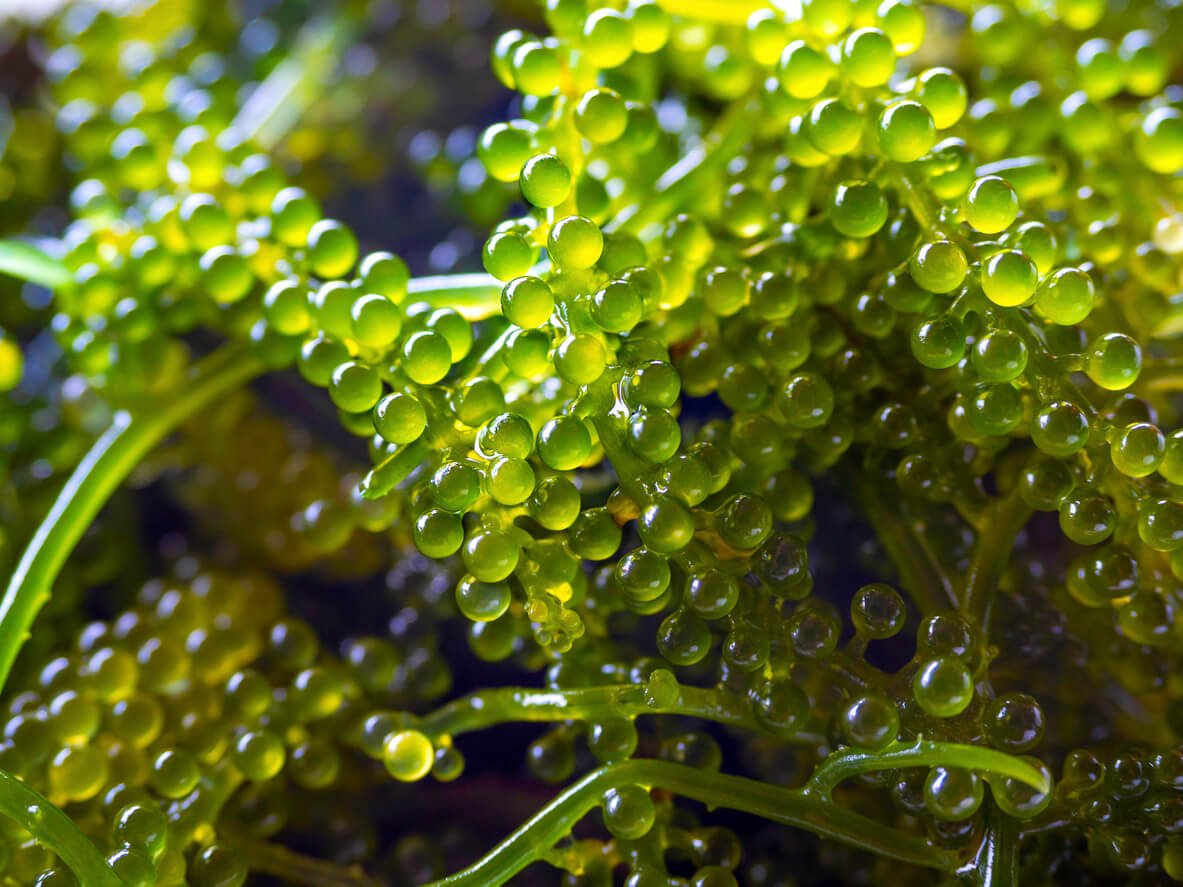
Less commonly consumed outside of Asia are sea moss, sea grapes, and sea beans. While not exactly seaweeds, these are also classified as sea vegetables.
- Sea moss (Chondrus crispus) is also called Irish moss, and often gets sold as a dietary supplement in powdered form. The red algae are also the main source of carrageenan — a polysaccharide used to thicken some foods and beverages (You can read about carrageenan concerns here).
- Sea grapes, or umibudo, come from southeast Asia (not to be confused with the seagrape tree native to the Caribbean). If you don’t live within driving distance of one of the villages where they’re grown, you’ll have to order the dried version online. These sea veggies look like tiny bunches of grapes on strands, and deliver a satisfying, crunchy texture and pop when you bite into them. However, unlike regular grapes, sea grapes taste like the ocean and are more salty than sweet.
- Sea beans, or salicornia, may look more like a fish tank decoration, but can be found at many farmers markets in the summer if you live near the shore. Sometimes called “sea asparagus,” sea beans are often used in crunchy salads, as a garnish, or in chickpea frittatas.
Nutrition of Sea Vegetables
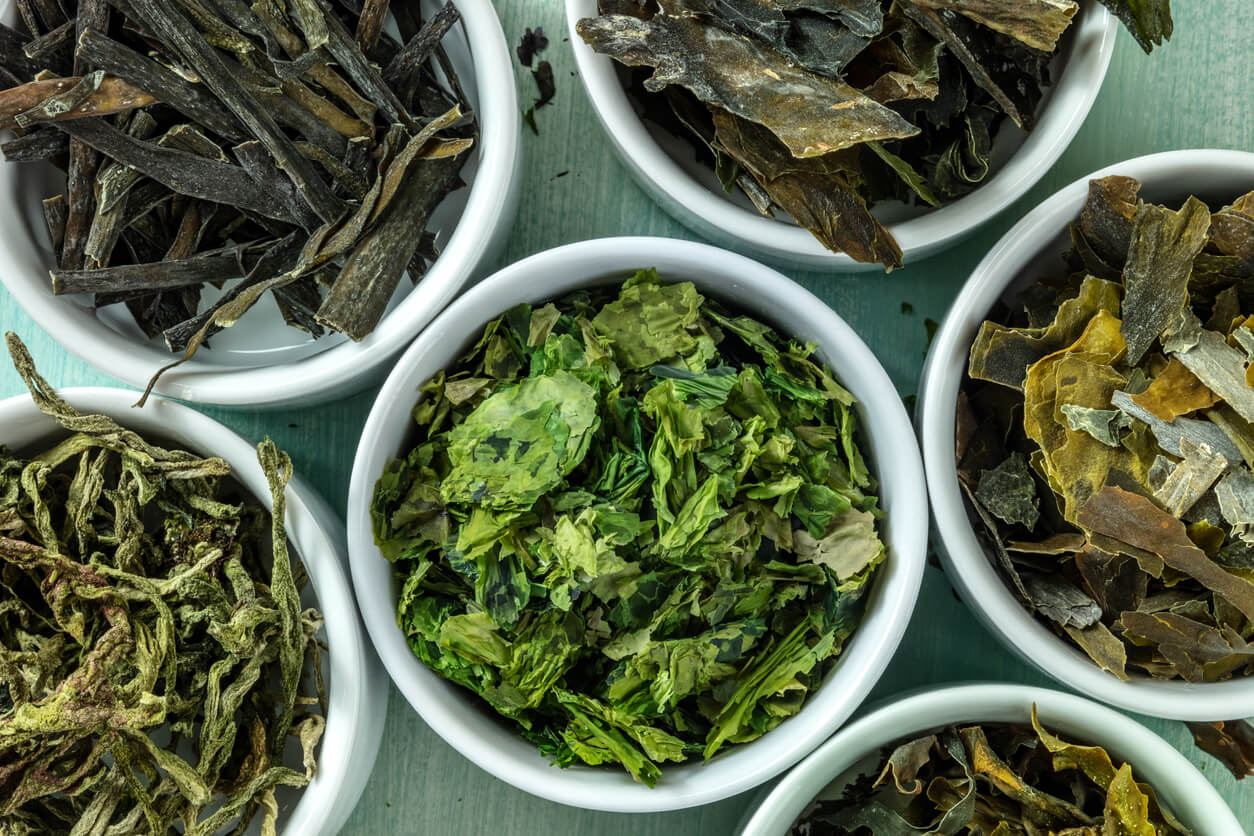
So are sea vegetables healthy? Well, they’re packed with nutrients, but are more appropriate as a garnish rather than something to pile on your plate every day. In fact, even in Japan — where sea vegetables are more common — people typically don’t eat them daily.
Sea vegetables are such a rich source of many micronutrients that it doesn’t take much to meet or even exceed our daily requirements for those nutrients. That’s why moderation is key, to keep you from getting way more of certain nutrients than is actually healthy.
Most types of sea vegetables are good sources of protein, fiber, healthy polyunsaturated fats, antioxidants, minerals, and vitamins. Some of the most concentrated minerals in sea vegetables are iodine, sodium, magnesium, and calcium. They’re also rich in B vitamins like folate and vitamin B12, as well as vitamins A, D, and K1.
Certain types of marine algae can even be made into algal oil, a vegan source of the very important omega-3 fatty acids EPA and DHA.
In one sheet of nori, for instance, you’ll get around 10 calories, 0 grams of fat, one gram of protein, one gram of carbs, one gram of fiber, six percent of the Daily Value (DV) for vitamin A, and four percent of the DV for vitamin C. It also has B vitamins, manganese, iron, and omega-3 fatty acids. One sheet also provides around 11% of the DV for iodine, which could be health bringing, or not, as you’ll soon see.
While different varieties of seaweed contain similar nutrient types, the amounts can vary greatly by species and preparation method. For instance, while 100 grams of dulse contains 307 mg of sodium, 100 grams of rockweed contains over 4,000 mg (more than the average American eats in an entire day)!
7 Health Benefits of Sea Vegetables

Sea vegetables, rich as they are in so many important nutrients, offer a number of health benefits.
1. May support thyroid health
Sea vegetables are the second richest source of iodine, after iodized salt. Iodine is an essential mineral, needed to make thyroid hormones that control your metabolism as well as other important functions for health. Many healthy, plant-based foods contain compounds that can interfere with iodine uptake, making it all the more important to get iodine from reliable sources, like iodized salt and/or small amounts of sea vegetables like dulse, kelp, and wakame.
2. May support pregnancy and postpartum recovery
The recommended daily intake of iodine during pregnancy is 220 micrograms to both meet the mother’s needs and pass on the nutrient to the baby. But many pregnant women don’t get this much. Families in Korea often make seaweed soup, or “miyeok guk,” for new moms to aid in postpartum recovery. It’s intended to provide nutrients like iodine for a baby’s brain development, iron to prevent anemia, calcium to prevent bone loss, and fiber to prevent constipation, among an array of other benefits.
3. May offer anticancer benefits
Sea vegetables may inhibit cancer cell growth and offer therapeutic benefits in the treatment of liver cancer. Red seaweeds contain compounds called porphyran and carrageenan that may help protect against cancer by boosting immunity and promoting cancer cell death.
Other types of seaweeds also contain anticancer compounds like terpenes, polyphenols, phlorotannins, fucoidans, and polysaccharides, which can help defend cells against environmental stressors that may lead to cancer. A 2014 review published in the journal Marine Drugs discusses how bioactive compounds in seaweed may offer therapeutic effects in cases of breast and colorectal cancers, primarily by inducing cancer cell death in both lab and human studies.
4. May support heart health
Sea vegetables are rich in dietary fibers, polyphenols, peptides, phlorotannins, lipids, and minerals, which may have a role in both preventing and treating cardiovascular diseases. Seaweeds are rich in antioxidants, which can help protect cells from oxidative damage that leads to heart disease. Other compounds in them may promote blood vessel dilation, which can bring down high blood pressure.
Additionally, sea vegetables contain flavonoids that may have beneficial metabolic effects on obesity and atherosclerosis, which are two risk factors for heart disease. Still other research has observed the ability of seaweed compounds to help lower blood fats, like total cholesterol, LDL “bad” cholesterol, and triglycerides.
5. May have antiviral benefits
Brown seaweed contains compounds called sulfoquinovosildiacylglycerols (which, sadly, is two syllables short of supercalifragilisticexpialidocious, so that particular mnemonic melody won’t help you remember it) — mercifully abbreviated to SQDGs — that have been found to have antiviral properties, particularly when it comes to herpes simplex viruses or cold sores. Many types of marine algae contain structural sulfated polysaccharides, which inhibit viral replication early in the process, preventing these viruses from attaching to a host (in other words, us).
6. May protect against obesity-associated metabolic complications
Sea vegetables are a rich source of compounds that appear to support a number of metabolic functions. A 2020 study published in the journal Current Developments in Nutrition examined the effects of Pacific dulse (a red algae) and wakame (a brown algae) on metabolic complications in obese mice. (Our view on the use of animals in medical research is here.) The authors found that even when fed a high-fat diet, the mice who were fed sea vegetables excreted more fat, experienced less systemic inflammation, and had healthier gut microbiomes compared to mice who did not eat them.
7. May protect gut health
Research shows that disturbances in the gut microbiome can underlie many chronic diseases, including type 2 diabetes, heart disease, gastrointestinal disorders, and cancers. To help prevent these changes, prebiotics are often recommended to promote an optimal balance of good gut bacteria. Compounds in seaweed, such as polyphenols, polyunsaturated fatty acids, and carotenoids, may help break down polysaccharides and oligosaccharides, and promote prebiotic activity in the gut that helps to reduce occurrence of chronic diseases.
5 Health Concerns Associated with Sea Vegetables
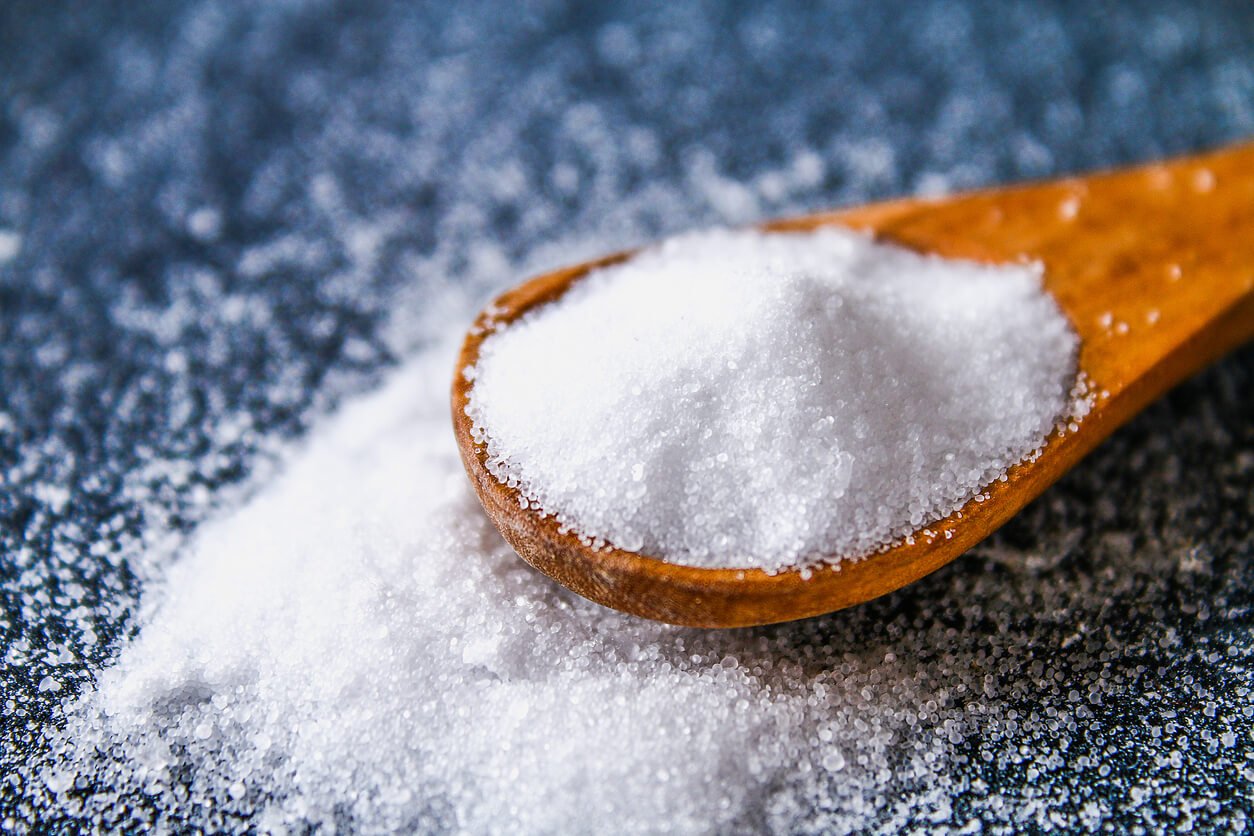
Despite their many benefits for your health, sea vegetables also come with potential downsides to consider before adding them to your diet.
1. May contribute too much iodine
As mentioned, sea vegetables are a rich source of iodine. And while iodine is an essential nutrient, there is such a thing as getting too much of it, which can be easy to do if you’re eating a lot of sea vegetables daily. Too much iodine can lead to hyperthyroidism and can also interfere with thyroid medications, like Synthroid.
In fact, some species of kelp (such as kombu) are generally not recommended because their iodine content is so high. The recommended average daily intake of iodine is 150 mcg/day for non-pregnant, non-breastfeeding adults. And most people may want to stay below an average of 300 mcg/day on a day-to-day basis, and definitely below 1,100 mcg/day, which is the daily tolerable upper limit for people without thyroid disease. Since a single tablespoon of dried kelp may contain up to 2,000 mcg of iodine, even modest amounts of this sea vegetable on a regular basis could cause problems.
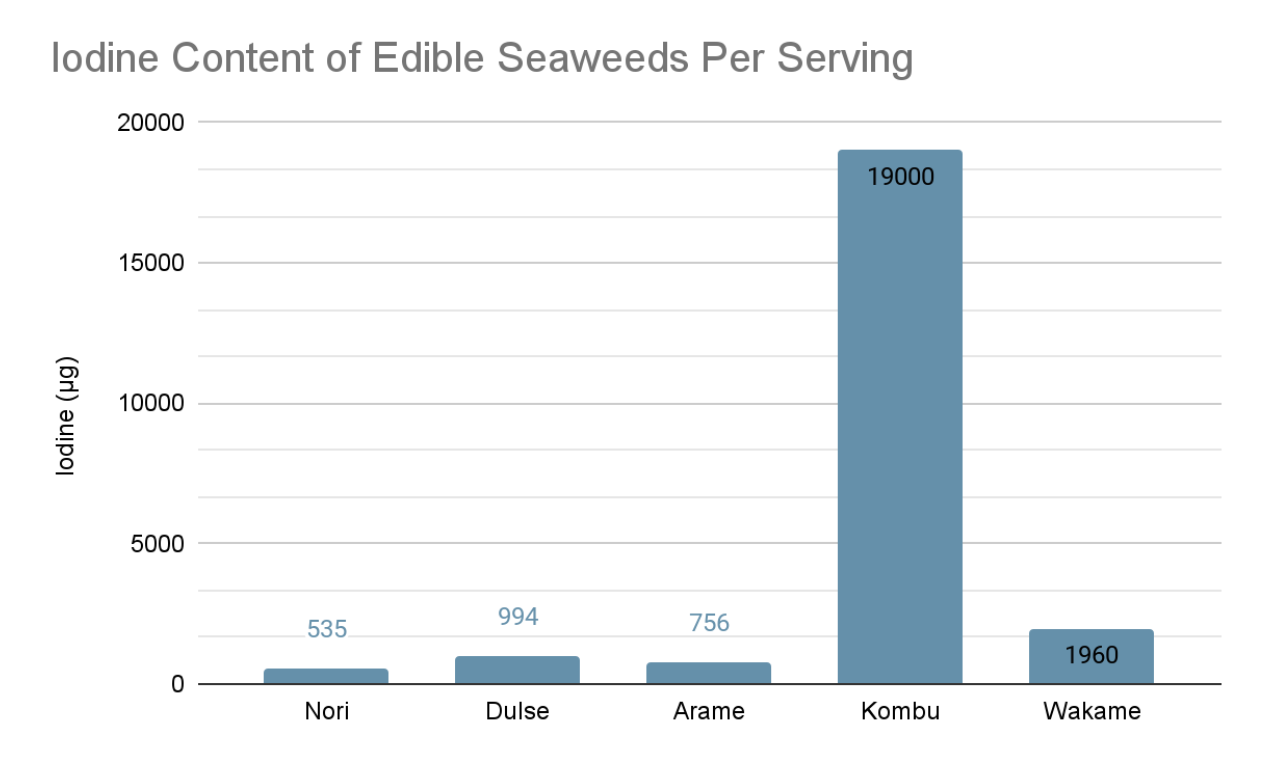
On the bright side, cooking significantly reduces the amount of iodine you get from sea vegetables. For example, boiling kombu for 15 minutes can make it lose up to 99% of its iodine content, while iodine in sargassum, a similar brown sea vegetable, loses around 40%. Much of that iodine may be released into the water, however. So if you’re cooking sea vegetables and then drinking the broth it’s cooked in, you could still be getting a hefty dose of iodine.
2. May contain arsenic
Arsenic is a naturally occurring heavy metal found in the environment. It tends to accumulate in air, water, and soil, and shows up in certain foods that are grown using these resources, including seaweed. As you probably know, arsenic can be poisonous to humans and is also a carcinogen.
One type of seaweed, hijiki (sometimes called hiziki), is actually no longer recommended for consumption because it tends to contain high levels of arsenic. Hijiki is an uncommon type of seaweed that’s black in color and primarily sold in dry shreds for use in Japanese and Korean cuisine. While other types of seaweed likely contain some arsenic, it generally shows up in such trace amounts that they’re not considered a threat to health when eaten in moderation. One study of 31 samples of five varieties of seaweed found that only hijiki contained concerning levels of inorganic arsenic.
If you are concerned about the arsenic content of seaweed, or find yourself forced to eat some hiziki (I’m drawing a blank as to how that might happen, but hey, you never know), boiling it in saltwater will reduce the arsenic levels.
3. May interact with medications
As we’ve seen, because of their high iodine levels, some kinds of sea vegetables may interfere with medications used to manage thyroid conditions. If you are taking such medications, you should probably check with your healthcare provider to find out if seaweed is safe for you to eat.
Sea vegetables are also considered leafy greens, which means they’re high in vitamin K. This nutrient is a natural coagulant, which means it helps your body form blood clots. This could be problematic if you’re taking anticoagulant medications, like Warfarin, which are designed to do the opposite.
While it’s not generally recommended to totally avoid vitamin K-rich foods while using these medications, it is important to keep your intake of this nutrient stable. If you take an anticoagulant medication, it may be best to talk with your healthcare provider to make sure your intake of vitamin K-rich foods like sea vegetables isn’t going to interfere.
4. May contain heavy metals
In addition to arsenic, seaweed can contain other heavy metals. For instance, varieties of red seaweed may contain cadmium, copper, manganese, and nickel in higher concentrations than other types of seaweeds. This appears to be especially true if they’ve been grown in southeastern China.
Mercury, a heavy metal linked to cognitive impairment and neurodevelopmental problems in babies when consumed by pregnant women, is a contaminant of concern in all types of seafood. Unfortunately, some research has found that blood levels of mercury are higher among people who eat the most seaweed, compared to people who eat the least. Warmer water temperatures can increase the amount of mercury absorbed by fish in these areas, and the same effect may occur in seaweeds — which is especially concerning with global warming trends.
The presence of heavy metals in seaweed — especially red varieties — is another reason to consume these foods in moderation.
5. May be high in sodium
Many sea vegetables contain high levels of sodium, which can be detrimental if someone already has a diet that’s high in this mineral.
Too much sodium can lead to increased blood pressure and fluid retention in the body, which can raise your risk for cardiovascular disease. This is because high blood pressure stiffens the arteries, reduces the flow of oxygen and blood through them, and makes the heart work harder to pump blood throughout the body.
Sodium intake may also need to be monitored in the event of an existing health condition like kidney disease or hypertension, to prevent the condition from worsening. High sodium intake can increase protein in urine, which can further the decline of kidney function among people with already deteriorating kidneys.
To avoid excess sodium intake from seaweed, it may be prudent to only eat it in small portion sizes, especially if your diet contains other sources of sodium or added salt. You can also soak dried sea vegetables in water, and then pour off the water, which may get rid of a lot of the sodium.
Environmental Benefits of Sea Vegetables
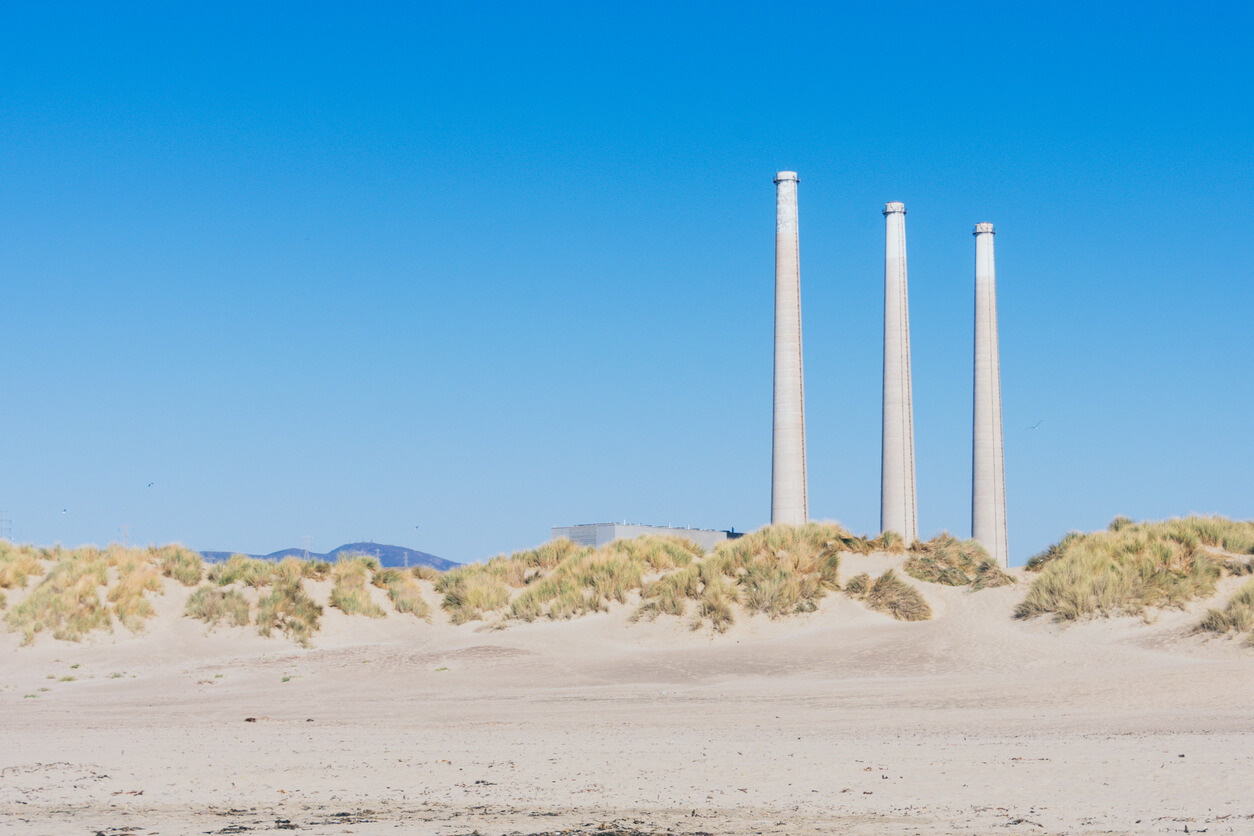
Just as sea vegetables come with both health benefits and concerns, they offer a similar mix of pluses and minuses when it comes to the impact of seaweed farming on the environment, too. Let’s start with the benefits.
Carbon Sequestration
First, sea vegetables help reduce carbon emissions by sequestering carbon from the atmosphere. In fact, coastal marine systems can absorb carbon at rates up to 50 times greater than forests on land. Kelp can grow at a rate of over one foot per day. On a global scale, seaweeds sequester nearly 200 million tons of CO2 each year. And in regenerative ocean farming systems, by removing kelp from the ocean rather than letting it decompose, it prevents the carbon sequestered in the kelp itself from returning to the water. Australian scientist Tim Flannery estimates that if nine percent of the ocean was covered with seaweed farms, it could effectively absorb all CO2 emissions from humans.
Reduce Ocean Acidification
Kelp, specifically, also has the added benefit of helping reduce ocean acidification. Ocean acidification mainly occurs from carbon dioxide gas in the atmosphere dissolving into the ocean. This leads to a lowering of the water’s pH, making the ocean more acidic, which threatens the survival of many marine species. Kelp traps carbon from the water and produces oxygen, which may help alleviate some of the acidification. Of course, the most effective way to sequester carbon is to not release it in the first place.
Oceanic Reforestation
Seaweed is essentially the forest of the ocean. Over 95% of sea vegetables come from farms, which are contributing to a kind of oceanic “reforestation.” There are even organizations working on managing seaweed reforestation projects around the world, such as SeaForester, which has the simple (yet actually highly complex) mission “to restore the forgotten forests in our ocean.” How does this work? Regenerative seaweed farms take kelp spores and grow them in tanks before reintroducing them into the ocean to grow, which then produces more spores, promoting reforestation.
Reduce Methane Emissions from Cattle
Sea vegetables can also help reduce methane emissions by adding certain forms of red seaweed (Asparagopsis taxiformis, to be exact) to cattle feed. According to researchers at the University of California, Davis, doing so may be able to reduce methane emissions by 82%. Of course, while this might make industrialized beef production a bit less environmentally damaging, a much more effective approach to reducing methane emissions (and a host of other environmental problems) would be for humans to reduce our consumption of red meat and reliance on factory farms altogether. But as long as people are eating industrialized meat, adding seaweed to cow feed is an intriguing step that could help reduce environmental impact. (I’m wondering if anyone has researched red seaweed’s gas-reducing ability in humans as well.)
Create Biofuels
Lastly, seaweed can create biofuels — renewable energy sources produced from organic matter or waste. This includes biofuel for the transportation sector, reducing consumption of fossil fuels. Compared to soybeans, which can also make biofuels, growing seaweed is faster, more space-efficient, and doesn’t need fresh water or fertilizer to flourish. Seaweed also doesn’t need land to grow.
Environmental Concerns Associated with Sea Vegetables
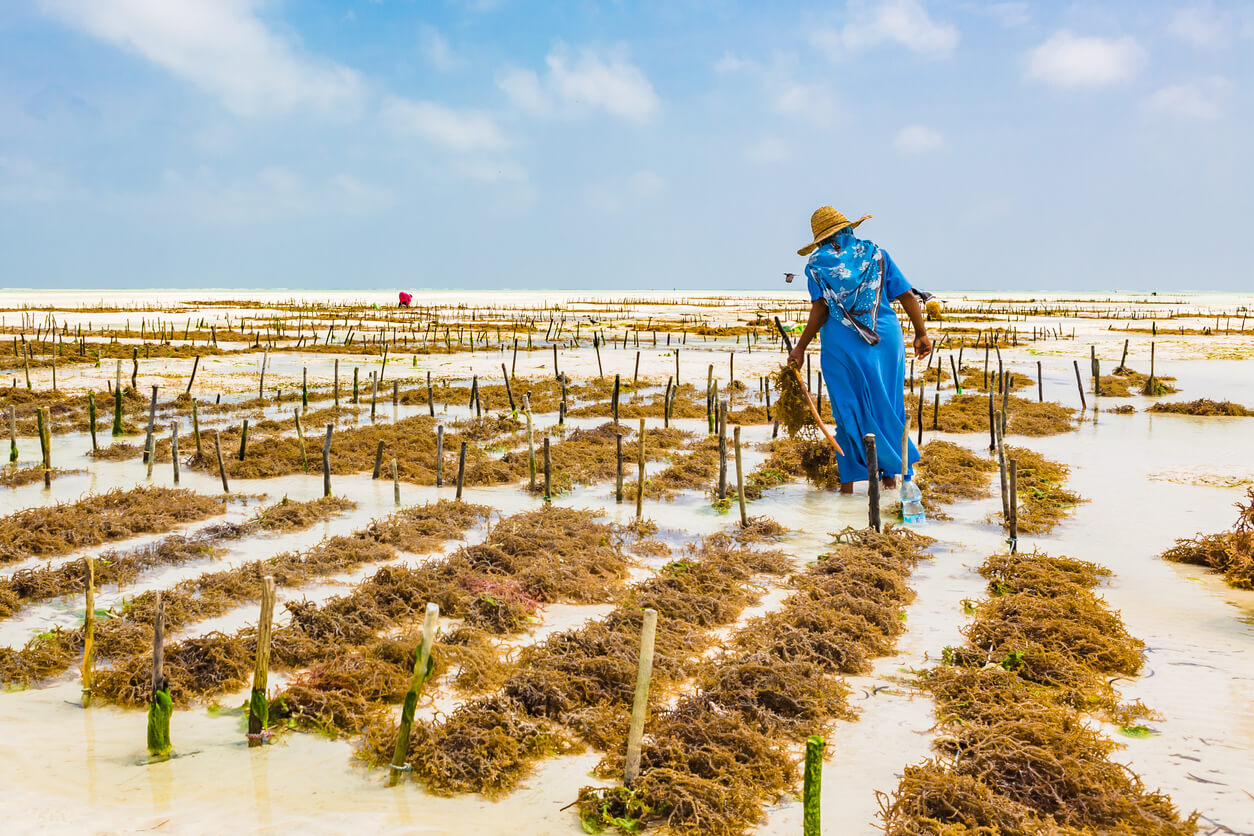
Despite all its environmental benefits, seaweed also comes with some potential eco-negatives.
Wherever seaweed is grown, it might compete with native species for things like light and nutrients. Without proper management, seaweed farms may also contribute to the problem of plastic, gear, and other types of pollution in the ocean, which can damage ecosystems and threaten marine life.
There are also monocultures of certain seaweed species, which reduces genetic diversity associated with domesticated seaweed species. This makes crops more vulnerable to disease. Plus, growing seaweed in areas where it doesn’t usually grow can increase the risk for invasive species to expand and throw off the natural balance of the ecosystem.
Over-foraging of wild seaweed can also pose problems. Currently, only five percent of all the seaweed that humans eat, globally, is the result of wild harvesting. Small-scale wild harvesting of seaweed happens by hand and is often referred to as seaweed cutting. If this is kept small-scale, and done sensitively, it may not cause much damage, and can even be beneficial if accompanied by reforestation techniques that stimulate the growth of more seaweed in the future. However, too many single wild harvesters collectively can do a lot of damage. For example, Chilean wild harvesting is especially damaging. As a result, the Chilean authorities made wild harvesting illegal in 2016 and are incenting wild harvesters to switch to sustainable cultivation of seaweed.
Where to Find Sea Vegetables
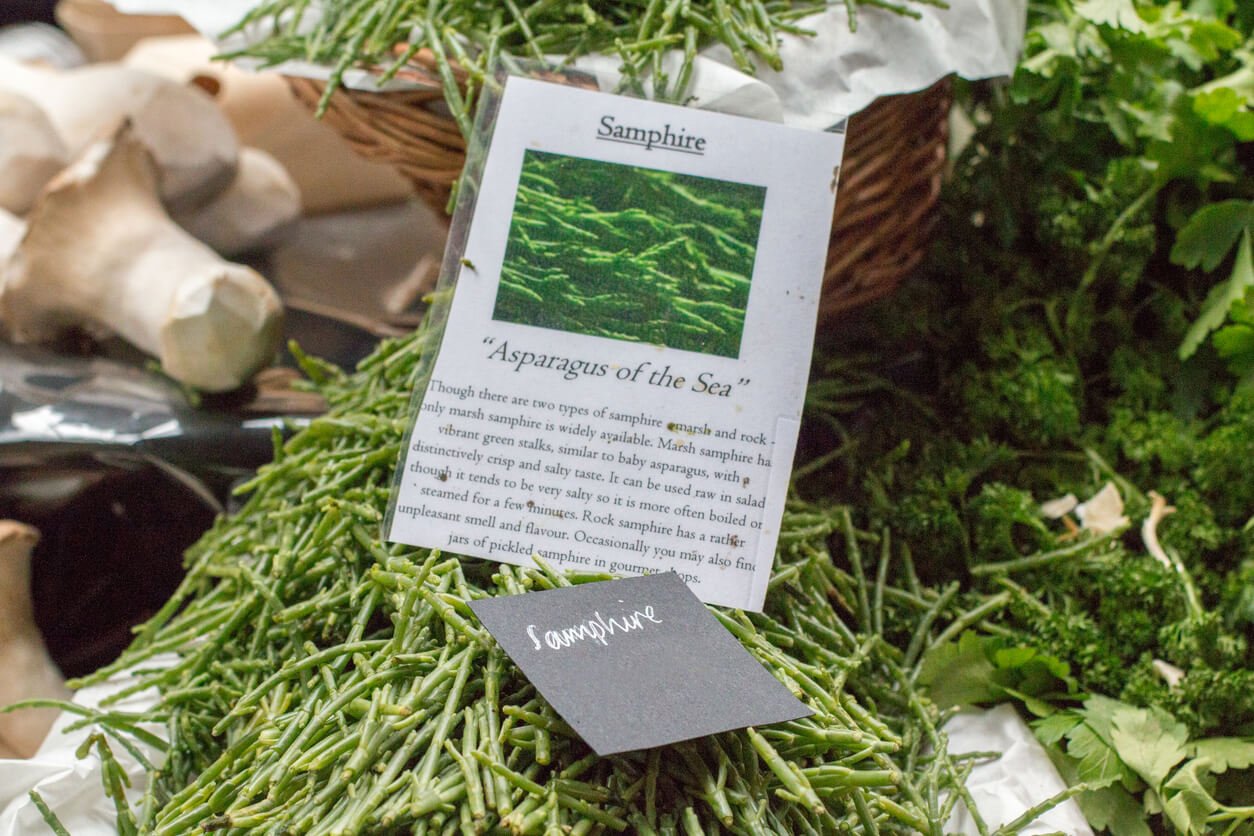
Fresh sea vegetables are generally hard to find, unless you live near the ocean and have local sources available. It’s more common to find fresh sea vegetables in Asian countries or Nordic countries in Europe. In the US, you may have a local source if you live in an area with ocean access, like near San Francisco or the coast of Maine.
If you’re feeling adventurous and want to forage your own sea vegetables, you might even find classes that can teach you how. Some classes offered on the west coast of the US range from a few hours to several days in length, and include harvesting sea vegetables from a kayak and even cooking it.
Fortunately, unlike foraging mushrooms — which can be deadly if you eat the wrong kind — there are no known poisonous varieties of seaweed, though some should be avoided because they can cause gastrointestinal distress if you eat too much. Your instructor should be able to steer you clear of any varieties that might cause problems.
Purchasing Sea Vegetables
Sea vegetables are typically sold in dried and packaged form, to help preserve their nutrients. But if you have a hankering for fresh seaweed, simply rehydrate the dried version before eating. To do so, place it in water until it softens right up — which could happen in as little as five minutes for some varieties.
Nori is typically sold in dried sheets, and is used to roll sushi. It also comes in smaller sheets as a snack food, or a kid-sized addition to bagged lunch. Some varieties, like dulse, are sold in shakers as small flakes. You can use these to sprinkle on dishes like stir-fries, casseroles, soups, and pastas. They also add a hint of ocean flavor to plant-based, fish-free tuna salads. Wakame and kombu seaweed varieties may be sold in dried strips or shredded.
You can usually purchase sea vegetables through online retailers, in many grocery stores, and in Asian markets.
When choosing your sea vegetables, look for organic brands that also use third-party testing to help make sure there aren’t high levels of heavy metals. If you can, it’s often ideal to buy sea vegetables from brands you trust, or from small, locally owned businesses run by people who live in coastal communities.
How Sea Vegetables Are Used
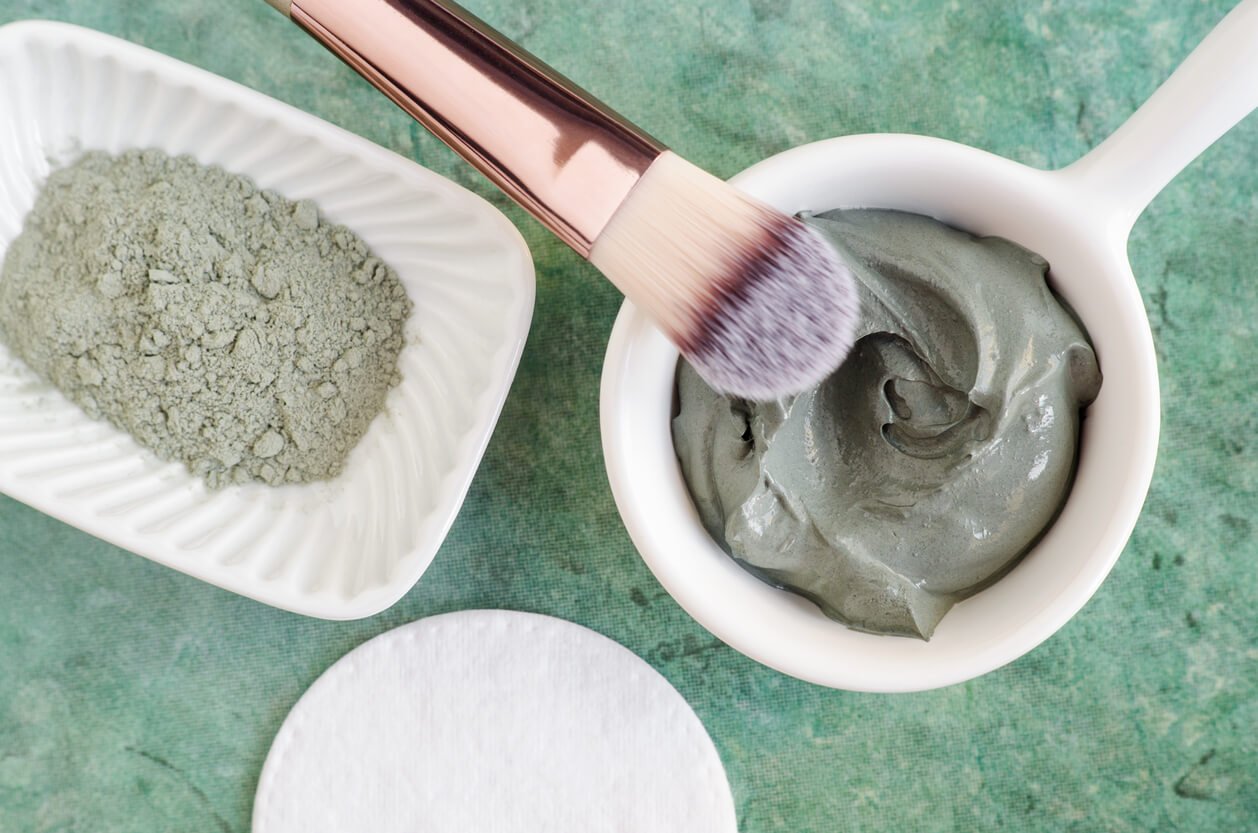
If you haven’t been used to eating sea vegetables as a regular part of your diet and lifestyle up to this point, you’re probably wondering how to use them.
Seaweed is actually commonly used as a thickening agent in food and cosmetics, so you might find it both in your kitchen and your bathroom. For example, carrageenan, a mixture of polysaccharides from red and purple seaweeds, may be found in both conventional and organic foods, including plant-based milks.
Sea vegetables may also be found in supplements. Algal oil is becoming more frequently used in vegan omega-3 supplements. Kelp and other seaweed may also be used in iodine supplements.
And, of course, many varieties of seaweed can be eaten on their own, usually in dried or dehydrated form. Just make sure to follow the recommended serving size to avoid overexposure of nutrients like iodine and sodium, as previously discussed.
Cooking with Sea Vegetables
If you’re suffering from flatulence after eating fiber-rich foods like beans and legumes, kombu can help. Adding kombu to your cooking pot, along with the beans, can help reduce the carbohydrate raffinose that’s found in beans and causes unwanted gas. (See, we are a bit like those cows!) This works because kombu contains the enzyme alpha-galactosidase that breaks raffinose down. Alternatively, you can use cumin or fennel seeds to get a similar result if you want to reduce gas but need to avoid high amounts of iodine in sea vegetables due to a thyroid disorder.
When eaten as a food, you can also use sea vegetables in the following ways:
- Eaten on their own as a snack (dried or toasted nori sheets)
- Crumbled up or sprinkled over various foods as a condiment
- In soups, especially miso soup or ramen bowls
- Used in grain bowls
- Blended into sauces and dips
- Rehydrated and made into salads (either on their own or with other veggies)
- Used to roll up and make sushi rolls
- Used as a sandwich wrap
Seaweed Recipes
If sea vegetables are new to you, it’s time to have fun experimenting! If you’re a sea veggie connoisseur, then we have some new tasty recipes for you to try. And, if you love nori rolls, then you’re going to love preparing the Veggie Nori Rolls even more. The key is letting go of all expectations in creating the perfect roll — enjoy the process of getting creative with your hands!
The Sea Veggie Gomasio is one seasoning that is tiny in size, but big in flavor — and even bigger in the nutrients it offers. Enjoy the colorful Warm Arama and Kale Rice solo as a meal or as a side dish to grilled tofu or tempeh. Arame has a mild flavor, so its use in meals is very versatile. So go ahead — have fun experimenting with sea veggies!
1. Veggie Nori Rolls
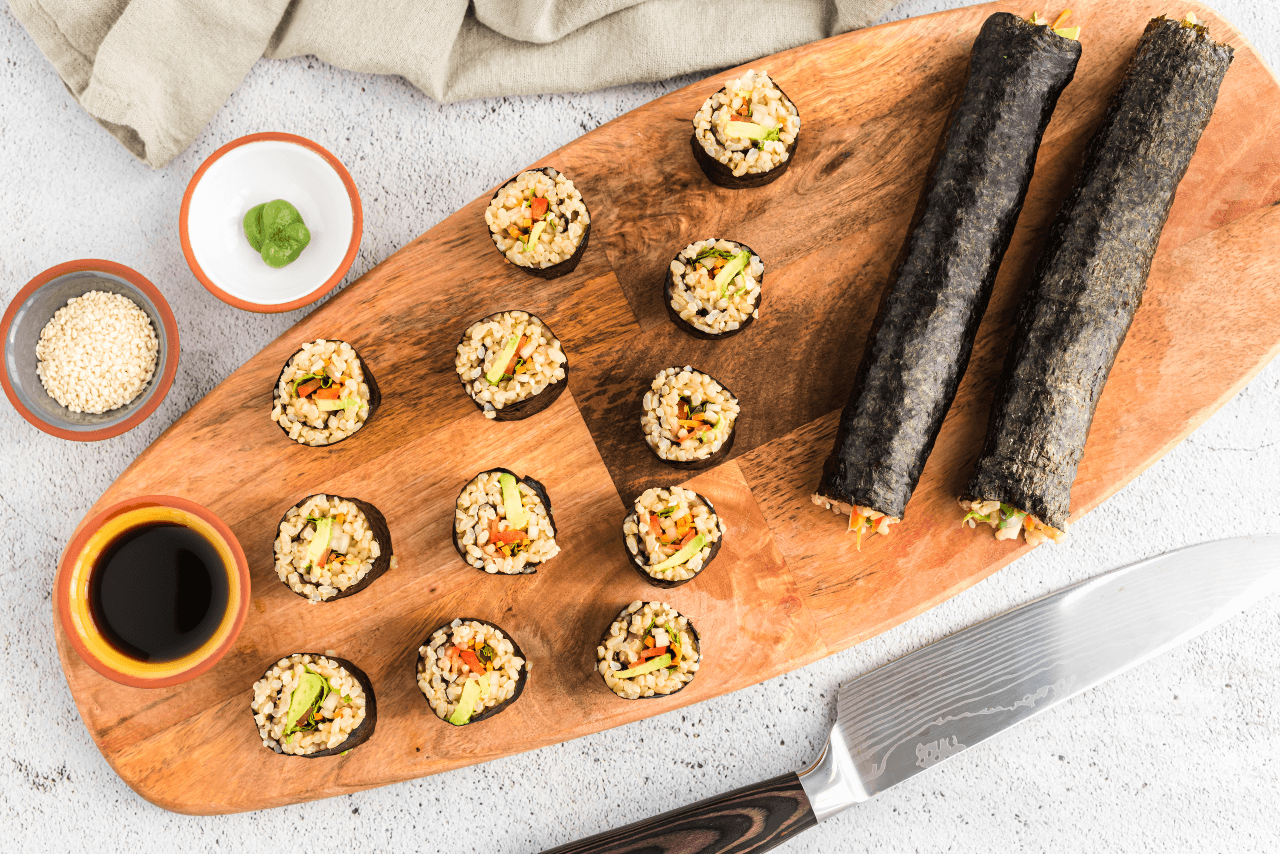
Making nori rolls at home doesn’t require fancy tools or equipment. If it’s your first time, don’t expect it to be a perfectly put-together little package. You can, however, expect it to be a fun experience that results in lots of delicious flavors, varied textures, and loads of nutrition from the mineral-rich nori sheets and nutrient-packed veggies.
2. Sea Veggie Gomasio
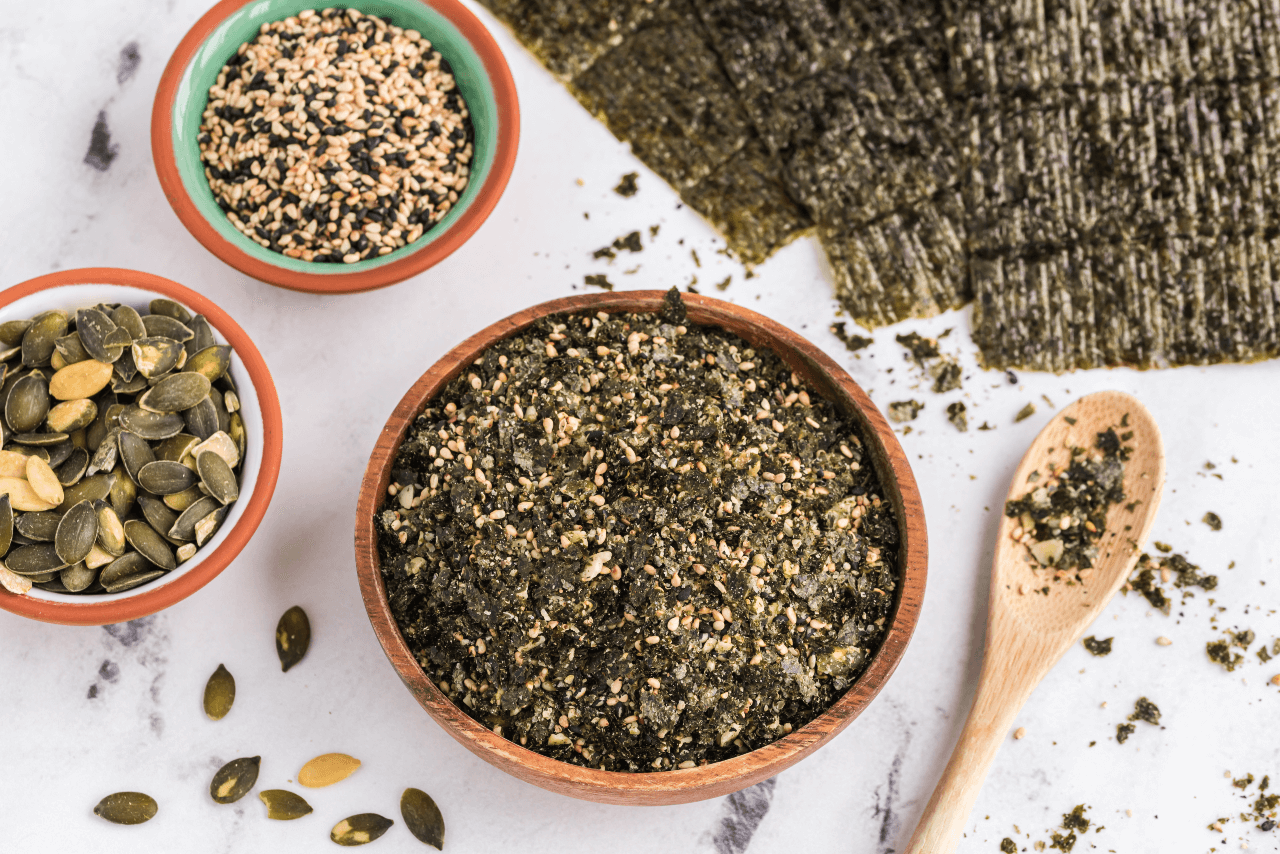
While this flavorsome condiment may not seem like much at first glance, with its short list of ingredients and five-minute preparation time, it’s actually packed with nutrients like calcium, magnesium, and zinc from the toasted nori, pumpkin seeds, and sesame seeds. It’s also filled with healthy plant-based fats and protein. Sprinkling just a bit on your grain bowls, stir-fries, and avocado toast not only adds lots of flavor but also oodles of nutrition.
3. Warm Arame and Kale Rice

Mineral-rich, sea veggie arame is sold in its dry form and needs to be rehydrated before using. With its mild flavor, it is a well-suited addition to a variety of taste profiles in stir-fries, salads, and bowls. Here, kale, edamame, peppers, and onions add pops of color, flavor, and nutrition. To highlight its natural and beautiful black color, make this dish with red or brown rice (black works too, but you won’t see the pretty arame!).
A Little Seaweed Goes a Long Way
Sea vegetables are uniquely nutrient-dense foods that are used all around the world — albeit to varying degrees — including in some of the areas associated with longevity. As such, eating them is associated with numerous health benefits and uses. However, many of them are high in iodine, which can be good in moderation, but may cause problems when overconsumed — especially for people prone to hyperthyroidism.
Many seaweed varieties are also high in sodium. And seaweed can contain contaminants as well as high levels of heavy metals. So it’s best to buy organic, locally sourced, or heavy metal tested sea vegetables when possible, and to consume sea vegetables with care and in moderation.
Seaweed also brings multiple environmental benefits, especially as an alternative to land-based agriculture and factory farming. But unsustainable practices occur in seaweed farming and foraging, so how it’s produced matters. Overall, sea vegetables can be a valuable source of nutrients when used in moderation, and can be a sustainable source of nutrition when farmed or foraged responsibly.
Tell us in the comments:
- Do you eat sea vegetables?
- What are some new ways you’re interested in trying sea vegetables?
- Have you ever tried seaweeds like dulse, kelp, nori, or wakame?
About The Author
Ocean Robbins
Stillness in the Storm Editor: Why did we post this?
The news is important to all people because it is where we come to know new things about the world, which leads to the development of more life goals that lead to life wisdom. The news also serves as a social connection tool, as we tend to relate to those who know about and believe the things we do. With the power of an open truth-seeking mind in hand, the individual can grow wise and the collective can prosper.
– Justin
Not sure how to make sense of this? Want to learn how to discern like a pro? Read this essential guide to discernment, analysis of claims, and understanding the truth in a world of deception: 4 Key Steps of Discernment – Advanced Truth-Seeking Tools.
Stillness in the Storm Editor’s note: Did you find a spelling error or grammatical mistake? Send an email to [email protected], with the error and suggested correction, along with the headline and url. Do you think this article needs an update? Or do you just have some feedback? Send us an email at [email protected]. Thank you for reading.
Source:
https://foodrevolution.org/blog/are-sea-vegetables-good-for-you/
Support our work! (Avoid Big Tech PayPal and Patreon)DIRECT DONATION


Leave a Reply